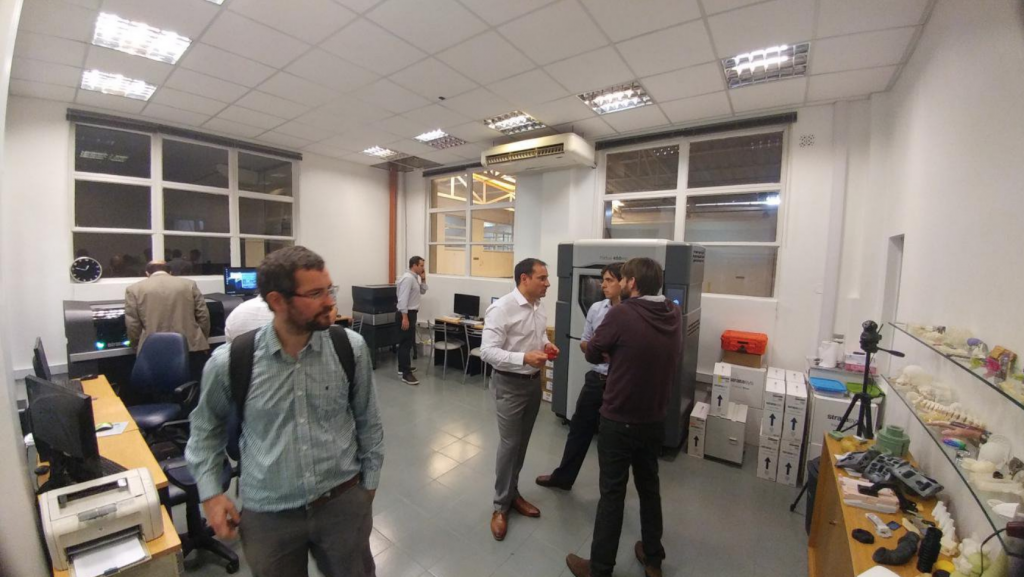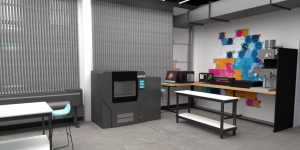It is quite common for emerging Latin American countries to follow global technology trends, but 3D printing hasn’t gained enough force to even begin to disrupt some of the main industries. Latin American economies have posted average annual GDP growth rates of about 3 percent, far slower than growth in some other developing regions. Furthermore, a report about productivity growth in Latin America by the World Bank, states that the technologies found in the factories are far less productive and closer to obsolescence than those in the United States. Only 22 percent of firms in the region innovate, which is very poor compared with 62 percent of firms in Europe and Central Asia. And even when they do innovate, Latin American firms do it cautiously. In an interview with 3DPrint.com, Juan Carlos Miralles, Stratasys Sales Director for Latin America and the Caribbean, tried to shed some light on the importance of using 3D printing technologies in local universities and hospitals, as well as educating younger generations in 3D printing and additive manufacturing. Miralles is very interested in the impact that medical models can have on the overall performance of hospitals and clinics, especially as pre-surgical models for complex procedures, also as cost-effective 3D printed anatomical replicas for medical education and training. For him, this means that the adoption of these advances in healthcare would help the region grow at a faster rate. According to Miralles, Brazil leads through research and development of 3D printing in medicine, and with one of the world’s biggest public health care systems, it’s no wonder it’s getting quickly ahead of the pack.
In 2013, just after Stratasys acquired Objet, Miralles was hired as Territory Manager for the US-based firm, hoping to bring the 3D printing revolution to America’s southern cone. At the time, Latin America was lagging badly, there were only a few printers -both Stratasys and Objet- in Brazil, Chile, and Argentina, so the company focused on increased participation of 3D printers in industries, but this took longer than expected.
“At the time, we felt we had to step up the expansion process for the technology, which we thought would be quick, but that did not happen. Actually, we noticed that when patents for our FDM machines expired, many small manufacturing companies in the region began producing 3D printers and marketing them as Stratasys FDM technology, so many people bought the cheaper versions. But after a while, they realized that they couldn’t do a lot with a $5,000 printer. So that was definitely a contributing factor that delayed the adoption of AM technology. Nevertheless, the market came around in 2015 and the Latin American tech community saw the difference between a professional printer and the hobbyist version,” Miralles told 3DPrint.com.
Investment in modernization of products and processes is very low, shifting the full burden of innovation to universities, which are accountable for most of the research. With Foreign Direct Investment flows to Latin America and the Caribbean contracting for the fourth year in a row in 2017, to 161,673 billion dollars, (that’s 3.6% down from 2016 and 20% less than in 2011), it’s not a pretty picture. Still, projects like the Brazilian Air Force’s partnership with Stratasys to manufacture aircraft components, or Chile-based Honeycomb Graphics’ tri-dimensional coloring system, which the company plans to use to transform the world of the average 3D printer user, are a few of the examples of ways in which local public and private undertakings are trying to build up experience.
“The fourth industrial revolution changes the way goods are produced everywhere, and that eventually will hit markets in the region. Through the use of new technologies, small countries can produce at reasonable costs, so that places like Chile or Colombia can compete with China in terms of goods production as well as begin to generate added value to their industry. Today, the largest industries are in Brazil and Mexico, followed by Colombia, Argentina, and Chile. Leading the way is Brazil with significant advances in the use of AM technology, notably at the the Renato Archer Institute, which has made great strides in healthcare. Chile is a pioneer, approving laws that compel medical insurance providers to pay for biomodels in complex surgeries, something that is currently undergoing FDA aprrovals in the United States, for example. Yet, in other countries, like Argentina, doctors have to find their own means to 3D print a pre-surgical model for a patient, which is exactly what Ignacio Berra is doing at Garrahan Children’s Hospital, even using money of his own to pay for them. On average, we talk about millions of dollars in savings thanks to 3D printing, something many helth systems in emerging countries really need to start thinking about,” Miralles suggested.
 On average, the specialist claims that savings in both time and money from pre-surgical medical models (biomodels) range between 50 and 60 percent. But public and private health systems in Latin America are taking too long to use the technology, which is why Stratasys is focusing on universities, creating alliances with renown institutions and developing Demo Centers to showcase their AM technology to industries and the academic community. Miralles suggested that the main purpose of this ongoing project is to establish long-term relationships with its customers so that they can forge their own applications using tools and technology from Stratasys.
On average, the specialist claims that savings in both time and money from pre-surgical medical models (biomodels) range between 50 and 60 percent. But public and private health systems in Latin America are taking too long to use the technology, which is why Stratasys is focusing on universities, creating alliances with renown institutions and developing Demo Centers to showcase their AM technology to industries and the academic community. Miralles suggested that the main purpose of this ongoing project is to establish long-term relationships with its customers so that they can forge their own applications using tools and technology from Stratasys.
“The concept of Demo Center arises in universities, which have become accelerators in the adoption of the new machines. We provide the best product available so that they can, in turn, help local companies use AM in any type of processes,” he said.
There is only one Demo Center in each country, including Perú’s Pontificia Universidad Católica (PUCP); SENAI CETIQT Technology Center for Chemical and Textile Industry, in Brazil; Argentina’s Institute of Technology of Buenos Aires; the University of Santiago de Chile; Colombia’s Pontífica Universidad Javeriana; Guatemala’s Francisco Marroquin University, and soon we can expect a new Demo Center in Ecuador’s Technological University of the North.
“Companies are interested in incorporating additive manufacturing and 3D printing. However, a lack of resources, investment and a shortage of local well-trained professionals limit their ability to fully adopt the technology. More universities need to promote STEM careers to increase the number of professionals with capabilities aligned to the 4.0 industry goals. This change has to start at the different levels of education, otherwise, emerging countries will find it hard to make a conversion to future jobs and disruptive technologies. At Stratasys, we seek to promote regional small and medium industries, so that they can become interested in 3D printing, allowing emerging countries to move away from traditional forms of production and become more competitive at the global market level, and today that can only be achieved by applying the best technology out there,” suggested Miralles.
Since 2013, Stratasys has grown in the region, with offices in Chile, Brazil, and Mexico and with over 1,000 machines in universities, industries, and hospitals. Miralles considers that there is a growth curve that is beginning to step up the pace.
“It all started very slowly for us and the technology in general, but now it might start getting more dynamic. Although I’m still waiting for the boom, where the increase in both research and commercial activity mean that many more people have started to incorporate the technology; perhaps in a few years when thousands of people and communities are benefiting directly from 3D printing, we can actually say that. I really hope so,” he concluded.
Subscribe to Our Email Newsletter
Stay up-to-date on all the latest news from the 3D printing industry and receive information and offers from third party vendors.
Print Services
Upload your 3D Models and get them printed quickly and efficiently.
You May Also Like
The Market and Industry Potential of Multi-Material 3D and 4D Printing in Additive Electronics
Additive manufacturing leverages computer-based software to create components for products by depositing either dielectric or conductive materials, layer by layer, into different geometric shapes. Since its birth in the 1980s,...
3DPOD 262: Bio-inspired Design for AM with Dhruv Bhate, Arizona State University
Dhruv Bhate is an associate professor at Arizona State University. There, he looks at structures, materials, and design. Previously, he worked at PADT as well as in the semiconductor and...
3DPOD 261: Tooling and Cooling for AM with Jason Murphy, NXC MFG
Jason Murphy´s NXC MFG (Next Chapter Manufacturing) is not a generalist service; instead, the company specializes in making tooling. Using LPBF and binder jet, the company produces some of the...
3DPOD 260: John Hart on VulcanForms, MIT, Desktop Metal and More
John Hart is a Professor at MIT; he´s also the director of the Laboratory for Manufacturing and Productivity as well as the director of the Center for Advanced Production Technologies....




































